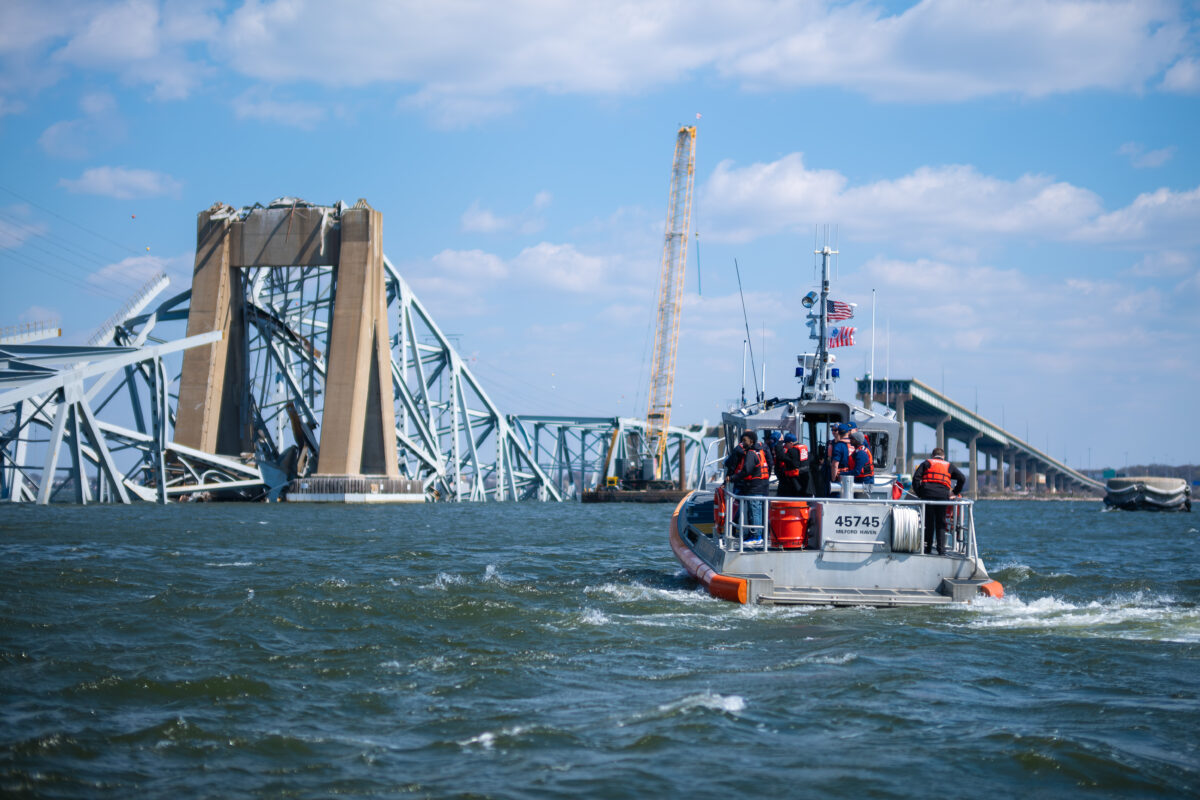
Steve Boone, bass player for the Rock and Roll Hall of Fame-inducted The Lovin’ Spoonful, lived, sailed, and made music in Baltimore for a dozen years, residing in the port city from 1974 to 1986.
Now 80, the co-writer of “You Didn’t Have to Be So Nice” (Top 10, ’65), saw the “terrible news” of the March 27 Francis Scott Key Bridge collapse from his home outside of Las Vegas.
“This was not the way I wanted to wake up in my own bed after a successful Flower Power Cruise,” wrote Boone in an email the day the bridge was struck by the Singapore-flagged container ship Dali. “I never shed tears over news on television. Today the tears flowed.”
As they did in homes across the Queen City of the Patapsco River Drainage Basin and throughout the Delmarva region.
In Dundalk, the former steel working town to the north of where the Key Bridge stood, some 63,000 people relied on the 1977-built landmark for some form of commerce, according to community leaders.
“The bridge was a major driver for local business,” says Meghan Sweeney of Dundalk Renaissance, which is providing financial counseling for residents affected by the crash. “As the summer season approaches, we expect to see the impact along waterfront restaurants and tourism related to boating.”
At Key Brewing, a craft brewery in Dundalk—“We’re purists, not elitists,” is their appropriately Baltimore motto—business has not noticeably changed. In keeping with the area’s blue-collar heritage (it was once home to the world’s largest steel mill), folks coming in to crack open a few have been bringing donations for their out-of-work neighbors.
“We’re lucky that our raw ingredients and packaging materials comes to us by rail and by truck,” says general manager Joe Gold.
Help in the millions of dollars—The Maryland PORT Act—was signed into law by Gov. Wes Moore earlier this week, as this year’s legislative session came to an end. It includes scholarships for the children of the six men who died while working on the bridge at the time of the accident. It also includes funds for those put out of work by the crash, including more than 2,000 longshoremen, as well as local businesses.
President Biden has promised that the federal government will pay the entire cost of rebuilding the bridge, estimated between $500 million and one billion dollars. Many of those dollars will go to local steel and iron workers hired to build bigger and better.
There could be at least one silver lining, as there was 120 years ago after the Great Baltimore Fire of 1904. After the disaster, the city passed a building code that promoted fireproof material, and the country soon standardized fire-hose couplings—the lack of which stymied efforts to extinguish the devastating blaze.
“You’re going to see design standards strengthened when they rebuild the bridge,” says Liam Davis, legislative affairs manager for the city’s Department of Transportation. “We learn from our mistakes.”
On Tuesday, Maryland Senator Ben Cardin said there is a good chance the entire Patapsco River channel would reopen by late May. The immediate economic fallout of the collapse, which immediately shut down ship traffic in the port, though two shallow channels have been opened for small vessels, goes far beyond the harbor rim.
“If you include all the warehouses, the longshoremen, and the docks themselves, it’s over 125,000 jobs in the metro area [that are impacted],” Davis says. “I met someone in Harford County who works for a company that makes tractors,” who was worried about his job and loss of income. The man’s hours had already been cut, Davis explains, with a layoff a possibility because Baltimore is a primary port for the import and export of 50-to-100 horsepower tractors, handling about $28 million worth of the machinery each month.
The Dali, still lodged in the wreckage more than two weeks after the crash with three victims remaining underwater, was loaded with some 4,700 containers on board. Together, the ship and cargo weighed about 110,000 tons. Cranes mounted on barges have been removing containers for the past week.
“I talked with an engineer who ran the numbers on the weight of the [985-foot long] ship, the speed it was going, and how much pressure it put [on the pylon],” says Davis, who is running for the City Council from Baltimore’s First District, which includes the southeast Baltimore waterfront. “He said there was no bridge in the United States that could have withstood the impact.”
“Piloting one of these massive container ships is like driving a brick, a big brick with a little point for a bow,” adds Robert Lukowski, a retired Port of Los Angeles pilot who learned the trade in Baltimore, his hometown.
The six victims were immigrant laborers from Mexico and Central America, all working a midnight shift to repair potholes on the bridge. Three bodies have been recovered, Maynor Suazo Sandoval, 38, from Honduras; crew foreman Alejandro Hernandez Fuentes, a 35-year-old from Mexico; and Dorlian Ronial Castillo Cabrera, 26, of Guatemala.
Still below the water as of April 9 were Miguel Luna, 49, from El Salvador; Jose Lopez, 35, who came to the United States from Guatemala 19 years ago; and Carlos Hernandez, 24, born in Mexico. Two workers on break when the crash occurred survived.
On the evening of April 8, a prayer vigil was held for the deceased construction workers at Sacred Heart of Jesus church in Highlandtown. A symbol of the city’s changing population, Sacred Heart was built in 1873 for the city’s German community, which established breweries and butcher shops throughout East Baltimore. It is now more than 90 percent Hispanic.
Looking back on his days sailing the Chesapeake Bay, Steve Boone said he will “always think of the Key Bridge as a curtain rod. Once you sailed under it, your eyes opened to the unique vista that is Baltimore.”
When sailing into the harbor from the channel from a trip down the Patapsco, the vista always told Chantel Burkhardt—a Dundalk born writer and teacher now living near Berkeley Springs, West Virginia—that she was home.
Her former house was on the water, and when the bulkhead needed to be repainted, she called an old friend from grade school, a graffiti artist named Derek Schell, and offered him a commission to collaborate. Schell, she says, brought her vision to life.
“The Key Bridge with Dundalk and Baltimore in perspective,” Burkhardt describes, “not just a symbol of home or adventure, but a vital connection.”
